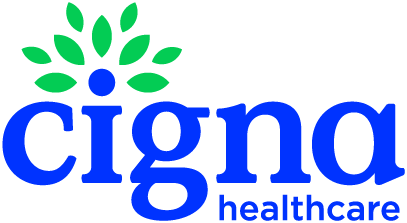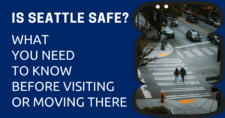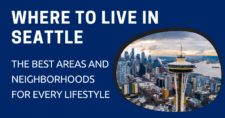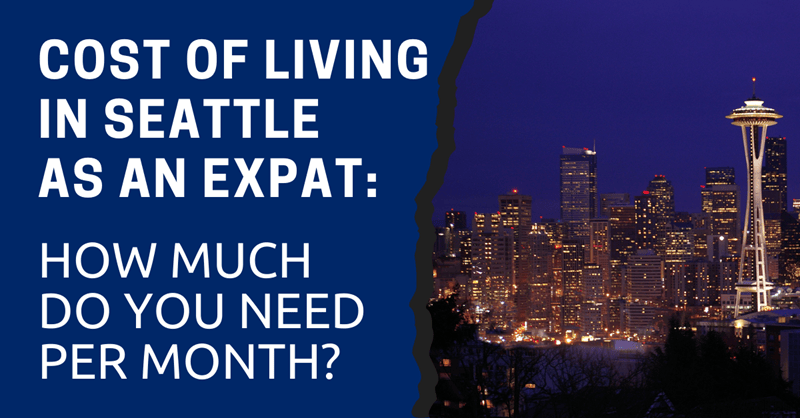
Planning to move to Seattle? Learn about housing, groceries, healthcare, and more to understand the real cost of living in Seattle.
Living in Seattle can be expensive. It’s one of the most expensive cities I have lived in so far. Compared to the country where I’m from, Thailand, living here can be significantly more expensive.
So, if you are planning to move here, budget planning is very important. You need to know the full picture of the average cost of living in this beautiful Pacific Northwest city before moving there.
In this article, I’ll explore the cost of living in Seattle, from day-to-day expenses such as food and groceries to major financial aspects such as housing, rent, transportation, healthcare, and entertainment.
Each section breaks down the major and minor expenses you’ll encounter each month while living in Seattle as an expat.
This article will take approximately 25 minutes to read. Don't have the time right now? No worries. Email the ad-free version of the article to yourself and read it later!
Disclaimer: This article may include links to products or services offered by ExpatDen's partners, which give us commissions when you click on them. Although this may influence how they appear in the text, we only recommend solutions that we would use in your situation. Read more in our Advertising Disclosure.
Contents
Key Takeaways
- Seattle is a major tech hub, attracting people from across the US and globally. It is home to major tech companies like Amazon and Microsoft.
- The hard truth is that Seattle is an expensive city. However, with careful budgeting and a solid understanding of the local cost of living, it can still be a decent place to live.
- High wages in Seattle may be attractive, but they come with a high cost of living.
- The average cost of living in Seattle varies from person to person, with estimates ranging from US$2,500 to US$5,000.
- However, in my opinion, at least US$3,500 is needed as a minimum, while US$4,500 is needed to live comfortably.
Is it Cheap to Live in Seattle?
Unfortunately, no. Seattle is one of the most expensive cities in the United States and the world.
If your country of origin is one where the cost of living is relatively low, Seattle’s cost of living might come as a surprise. Even if you’re from a Western country, Seattle can also be quite expensive.
According to Payscale, in 2025, the cost of living in Seattle is about 45% higher than the national average. The city almost always appears in the top 10 or top 20 rankings of most expensive cities globally.
If you’re from Switzerland, you might find that Seattle’s cost of living is relatively lower in comparison. On the other hand, if you’re from Bangkok, Seattle is 129% more expensive.
To give a clearer picture, here are some summarized figures, assuming you’re from Bangkok:
- Rent is 235.6% higher in Seattle.
- A restaurant meal is 714.5% more expensive in Seattle.
- Groceries are 120.9% more expensive in Seattle.
- A bottle of water costs 796.8% more in Seattle.
Pretty expensive, right? However, local purchasing power in Seattle is 197.5% higher, meaning the same amount of money will buy nearly three times as many goods in Seattle as it would in Bangkok.
The higher wages in Seattle are the source of these higher prices. The average monthly salary in Seattle is US$6,582.16, compared to Bangkok’s US$858.39. Prices in Seattle are higher because of this 666.8% increase.
That said, the cost of living in Seattle is still much higher than both the rest of the world and the US national average. Housing and rent, in particular, are very expensive.
Visa Type
Your visa type will have a significant impact on your cost of living in Seattle. US visas vary depending on your status and goals in the country. Assuming that you’re on a non-immigrant visa such as the L-1, H-1B (work visa), or F-1 (student visa), you’ll likely be expected to earn a sufficient income (or have financial backing from back home) to cover monthly expenses.
If you’re a green card holder, you’ll have access to government programs like Medicare and Medicaid to offset costs. However, healthcare in the US remains expensive, especially in large cities.
Green card holders are also more likely to find housing and rent a bit cheaper and have more flexible housing arrangements compared to non-immigrants.
Alternatively, you can apply for an EB-5 Immigrant Investment visa. The financial requirements are US$800,000 in targeted employment areas and US$1,050,000 in other locations. The investment must also create 10 full-time jobs for US workers.
In other words, if you’re on a non-immigrant visa, you’ll be expected to pay upfront or at least earn enough per month to get by. But if you’re a US resident or have strong financial backing, you’re already halfway established in Seattle.
Accommodation
Housing is a big part of your expenses. Let’s take a look at how much you should expect to pay per month.
Long-term Rentals
When you live here, it’s good to know that it’s much easier to find long-term rentals in Seattle, as there are fewer restrictions compared to short-term rentals. There are several apartments available for long-term renting, and the rental process is similar to anywhere else. You sign a lease and are expected to pay monthly rent (and utilities).
A furnished one-bathroom studio in the city center costs around US$1,500 to US$2,000.
Depending on the rent, you’ll find studio sizes ranging from 300 to 600 square feet (27.87 to 55.74 sqm). Wi-Fi is typically included in the rent. In-unit appliances and furniture typically include a fridge, freezer, microwave, bathtub, bed frame and mattress (some apartments provide bedding), and some apartments also have a conventional oven and a dishwasher.

Facilities generally include a storage room, a lounge, mailboxes, and bicycle storage.
Apartments with a parking service are hard to find, so you’ll need to rent a separate parking space.
A one-bedroom apartment starts at around US$2,000. A two-bedroom, one-bathroom house is around US$3,000 per month and up. The closer you are to the city center, the more expensive it gets.
Some apartments also include utilities in the rent, so if you like convenience, a utilities-included apartment is the way to go. I used to rent one of these apartments, and it was very convenient since you don’t have to handle utilities yourself.
Short-term Rentals
If you just moved to Seattle, it’s possible to find a short-term rental for a house, condo, or apartment in Seattle. However, the options are more limited. According to the Seattle city government, a short-term rental is defined as a house, condo, or apartment “that is rented for a fee for fewer than 30 consecutive nights.”
That means if you rent for more than 30 consecutive nights (i.e., more than one month), it’s considered a long-term rental. So, keep in mind that short-term renting is fairly restricted in Seattle.
Seattle has hotels, hostels, and Airbnbs. The average daily short-term rental rate is between US$150 and US$300. A furnished studio apartment can be US$150 per night, while a one-bedroom apartment is between US$200 and US$300.
Housing Prices
If you are looking to buy a house here, it’s definitely not for the faint of heart since housing prices in Seattle are expensive. According to Redfin, the median sale price in July 2025 is US$880,000. Buying a house in Seattle is generally reserved for wealthier individuals.
Like most American cities, Seattle has both affordable and expensive zones. You’ll find luxury condos and houses near downtown Seattle and Capitol Hill to be expensive.
In suburban areas like Delridge and Everett, as well as neighborhoods south of the city, near the airport, and the suburbs of SeaTac, housing prices are more affordable.
One thing is certain: you won’t expect to find a house below US$250,000. On the higher end, luxurious homes and condos can cost US$3,000,000. On the lower end, one-bedroom, one-bathroom houses are usually around US$250,000 to US$500,000.
Dining Out
Seattle offers a variety of restaurants. You’ll find Japanese spots around the corner. You’ll also find luxurious fine-dining Italian and French restaurants in the city center. From classic Southern fried chicken to Hawaiian dishes, it’s a cosmopolitan city with numerous culinary options to choose from.
Because of higher wages for restaurant workers, meals at restaurants are more expensive. The rising demand for housing also contributes to higher food prices, along with the aforementioned high housing costs, affecting business operating costs.
Also, considering the fact that the city has a diverse culinary culture, imported ingredients are commonly used. The average cost of a meal at an inexpensive restaurant can be around US$15 to US$25, while a meal at a mid-range restaurant usually costs around US$25 to US$50. Fine dining starts at around US$120+ per person.
Take, for example, at a cheap udon place, I can order a bowl of niku soup udon, which costs around US$15, three pieces of gyoza for US$1.50, and a bottle of Calpico for US$3.99, plus a 15%-20% tip (yes, the tipping culture is pretty strong in the US, but you can choose not to tip, though). The total is US$24.6.
Groceries
To save some budget, you may need to cook food yourself. Actually, this is quite a common method for those who live in Seattle since dining out is expensive.
Unfortunately, food prices are much higher than the national average. For example, on average, a carton of eggs in Seattle costs around US$6.81, compared to the national average of US$4.95. A loaf of bread costs US$4.69, and one pound of rice costs US$2.36. One pound of bananas is US$1.26, and one pound of chicken fillets is US$7.21.
Please note that prices vary from store to store. Here are some of my favorite grocery store brands here:
- Safeway is one of the most popular American supermarket chains with locations throughout the country. They sell groceries, dairy products, bakery items, meat, and processed foods.
- QFC is a Washington State-based store that includes local products in its selection.
- Grocery Outlet is a discount grocery chain that offers off-price products, near-expired products, and overstocked goods.
- Whole Foods offers premium, non-processed products and organic items.
Based on my observation, Safeway’s prices on everyday items tend to be a bit cheaper compared to QFC. On the other hand, QFC is known for its higher-quality choices and homegrown selections, so prices are slightly higher than Safeway.

There are also a few Grocery Outlets selling cheap but lower-quality products.
For a higher-end option, you’ll find Whole Foods, offering premium, organic, and gourmet products, though they’re the most expensive.
Let’s explore some everyday item prices at a Safeway store near the city center:
- A gallon of whole milk costs US$4.59. A more organic one costs US$7.49.
- A pound of chicken thighs costs US$14.07.
- A carton of large brown eggs costs US$6.99.
Seattle has a large, visible Asian population. You’ll find different brands of Asian grocery stores, especially in the International District/Chinatown part of the city.
Farmers’ Markets
Other than Pike Place Market, which is a tourist spot, there are three other famous farmers’ markets in Seattle: the U-District Neighborhood Farmers’ Market, the Capitol Hill Neighborhood Farmers’ Market, and one in West Seattle.
Market vendors sometimes offer cheap in-season products. For example, tomatoes in summer cost around US$3.00 to US$5.00 per pound, while they are around US$4.00 to US$6.00 at grocery stores in the same season.
On average, fresh vegetables and high-quality items at these markets are 20-30% more expensive compared to grocery stores. A carton of eggs can cost up to US$8.50 at these markets. Some people might even say that they’re overpriced, but you get what you pay for.
The U-District market is open on Saturdays from 9 am to 2 pm, while the West Seattle market is open on Sundays from 10 am to 2 pm. The Capitol Hill market is open on Sundays from 11 am to 3 pm. You can find more information and a full list of vendors on their website.
Coffee
The original Starbucks store is at Pike Place Market. There are also two Starbucks Reserve stores worth exploring: one in Capitol Hill and another at Starbucks’ HQ in SoDo. Both Reserve stores offer workshops and tours, plus beans to take home.
Besides Starbucks, there are also plenty of independent coffee shops, especially in the downtown and Capitol Hill areas.
In terms of prices, a regular coffee costs about US$3.69, a cold brew is US$5.38, and a latte is US$5.45, while a cappuccino is about US$5.77. So, coffee prices in Seattle typically range from US$3 to US$6. However, recently, higher-end coffee shops have increased in number. Their prices are between US$8.00 and US$15.00.
Public Transportation
There are several public transportation options to choose from:
- Light rail is considered one of the most affordable and efficient modes of transportation in Seattle. It runs through most of the city’s key landmarks and districts, passing through the University of Washington and Capitol Hill, going directly to the airport. It’s much cleaner than most of the city’s buses. Prices are US$3 flat.
- King County Metro bus fares are US$3 for a single ride. The bus system serves the city and surrounding areas, connected by other Sound Transit buses, which go to cities like Tacoma and Everett. You can find more about their routes on their website.
- The iconic Monorail is one of my favorites because of its aesthetic and cultural value, not because I used it daily or anything. It runs from Westlake Center to Seattle Center, with just one stop, great for sightseeing. A one-way adult ticket is US$4.00, and a round-trip is US$8.00.
- Sounder trains are operated by Sound Transit. There are two lines: one goes to Everett, and the other goes to Tacoma. A one-way adult ticket costs between US$3.75 and US$5.75, depending on the distance.
- Washington State Ferries are used to travel to islands and other areas across Puget Sound. Fares vary by route, with average adult fares around US$10.
Most public transportation systems accept the ORCA card. You may want to apply for one because it’ll make your life easier by saving you from having to buy a ticket every time you travel.
They also offer a monthly pass starting from US$90. You can get one online or visit a customer service outlet or ticket machine.
Taxis
The good old taxi services are decent and reasonably priced. Thanks to new laws passed by the Seattle city government in 2023, their fares are a lot cheaper than those of Uber and Lyft. According to the city, they now use new “alternative methods,” which can vary by dispatch agency, to determine taxi prices.
And I’m not kidding about the reasonably priced part. The base fare is US$2.60, with a charge of US$2.70 per mile and a time charge of US$0.50 per minute. Additional charges like tolls, fare payment by credit card, or extra luggage may be added.
Seattle Yellow Cab is the most popular taxi service. You can download their app onto your phone or simply call them to pick you up. The app is used for booking, tracking your taxi, and making payments.
Uber and Lyft are also popular, but they usually cost more than regular taxis because of local rules.
For example, a one-mile ride from the Starbucks Reserve on Pike Street to Pike Place Market costs about US$10.95 with Uber or Lyft, while a regular taxi would be around US$5.00 to US$6.00 (base fare US$2.60 + US$2.70 per mile = US$5.30).
Moreover, depending on the time of day, weather conditions, traffic, and demand, Uber and Lyft are more prone to fluctuation.
Private Car
Transport options in the US may not be as sophisticated as in other countries, but living in Seattle without owning a car is still manageable. However, sometimes, it can feel like a grind when you need to travel far outside of the city and its surrounding areas, unless you’re using Uber/Lyft or taxis.
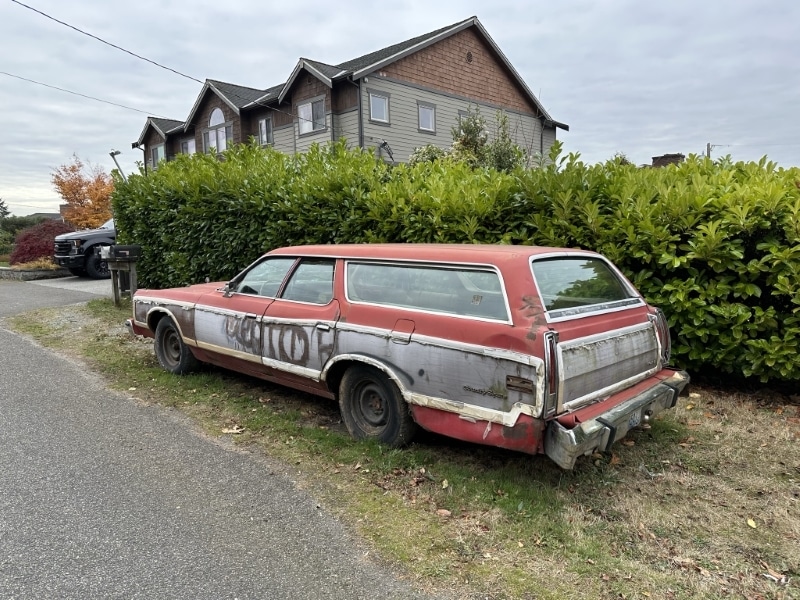
As of August 2025, Seattle gas prices are around US$4.60 per gallon, significantly higher than the national average of about US$3.20. Some people might even argue that owning a car isn’t worth it.
If you want to buy a car, however, paying upfront for a new one will cost you around US$50,000, though used car prices can vary. Auto loan rates are about US$700 a month, and additional auto insurance is US$200 per month. So, you’re looking at about US$900 per month, which doesn’t include additional expenses like maintenance and parking fees.
Healthcare
Seattle has a high-quality healthcare infrastructure and is also a hub for biotech and medical research. The University of Washington is considered one of the most medically advanced and prestigious institutions in the US and globally.
However, as you might already know, the US healthcare system, along with the insurance industry, is pricey. There’s no universal healthcare coverage, so most people rely on either government programs like Medicare or Medicaid or insurance.
According to Redfin, healthcare services in Seattle are 27% more expensive than the national average. A doctor visit without insurance costs around US$208.06, while a dentist visit costs US$156.67. However, the average prescription price is 9.82% lower than the national average, at US$18.74.
Major healthcare providers in Seattle include Swedish Health Services, Harborview, Virginia Mason, Kaiser Permanente, UW Medicine (university hospital), and Optum (The Polyclinic).
Now, let’s talk about insurance.
Employer-sponsored insurance varies from company to company. Employers usually cover around 70% to 90% of the monthly premium for employees. There are also copays, deductibles, and coinsurance, depending on your plan. On average, employees pay around US$120 to US$250 per month for insurance.
Buying health insurance on your own is also possible. Monthly premiums range from US$200 to over US$1,000 per month, depending on the plan and coverage. You can use the Washington Healthplanfinder tool to estimate your rates.
International health insurance, like Cigna Healthcare and GeoBlue, is also a good option for expats. Prices vary, but you can expect to pay around US$230 per month for a basic plan, while a mid-tier plan is around US$320, and full coverage is about US$420 and up.
Read our guide to health insurance in the USA for more information.
Education
Whether you can study or not largely depends on your visa and residency status, so this topic can vary greatly from person to person. If you’re coming to the US solely to attend a university or school, then your visa is likely either an F-1 or J-1. However, these visas fall outside the scope of this guide.
However, if you’re on an H-1B, you can attend a university, provided that your studies don’t interfere with your full-time work responsibilities. Also, if your child (a dependent) holds an H-4 visa, they can attend school. Tuition fees vary from institution to institution and program to program.

For example, as of September 2025, a non-resident attending the University of Washington can expect to pay US$44,640 per year for undergraduate programs and US$33,171 per year for graduate programs.
Good to know: Since the American curriculum is already used globally, the concept of an “international school” in the US has a different meaning than it does elsewhere. In the US, the term usually refers to schools that follow a non-American curriculum. That said, there are relatively fewer international schools in the US, and many of those that do exist, like French and Japanese schools, cater to specific expat communities.
Utilities
Seattle’s energy sector is subsidized by both the city and state governments. The city benefits from various state-provided energy grants, loans, credits, and incentives. That said, while utility rates are slightly higher (by about 2%) than the national average, they remain lower than those in most large US cities.
Seattle’s climate is cool to temperate. Summers are dry and may occasionally require air conditioning, while winters are quite cold and require regular heating. Accordingly, air conditioning can make up a large part of your bill.
On the other hand, water usage in Seattle is among the most expensive in the US because it includes high-cost sewage treatment required for clean water.
The city offers both bi-monthly and monthly billing options.
Electricity
Seattle City Light (SCL) is a public not-for-profit utility agency. Compared to other large US cities, electricity is fairly cheap. According to the city government, it “primarily relies on low-cost, renewable, carbon-free hydroelectricity” which helps keep electricity prices down.
The Seattle Housing Authority estimates that the monthly electricity bill is US$50 (US$100 bi-monthly) for a studio apartment, US$65 (US$130 bi-monthly) for a one-bedroom, and US$85 (US$170 bi-monthly) for a two-bedroom. And I’ve found this estimate to be accurate.
As the city has implemented an optional time-of-use model, here’s a breakdown of electricity pricing:
Flat-rate pricing
- Base service charge: US$0.3077 per day. Applied regardless of consumption.
- Energy charge: US$0.1375 per kWh.
Time-of-use option (optional, available from Fall 2025)
- Base service charge: US$0.3077 per day. Applied regardless of consumption.
- Peak hours: US$0.1656 per kWh. From 5 pm to 9 pm, Monday through Saturday, except on city-observed holidays.
- Mid-peak hours: US$0.1449 per kWh. From 6 am to 5 pm and from 9 pm to midnight, Monday through Saturday. On Sundays and city-observed holidays, mid-peak pricing applies from 6 am to midnight.
- Off-peak hours: US$0.0828 per kWh. Midnight to 6 am daily.
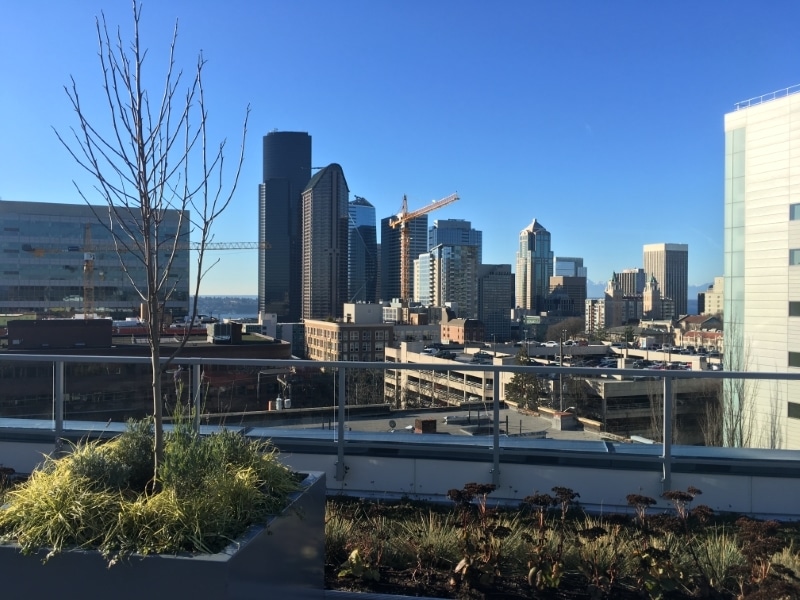
Water
Water services are managed by Seattle Public Utilities (SPU), another public utility agency. Rates vary by season and are generally expensive compared to other US cities.
Seattle residents pay an average of around US$75 to US$85 per month (or US$150 to US$170 bi-monthly) for water usage.
Here’s a breakdown of water pricing:
- Base service charge: depending on the water pipe diameter, but the most commonly used is 3/4” and less, which is US$20.45 per month, per meter.
- Commodity charges: Rates vary by season.
- Winter: US$5.79 per CCF.
- Summer: first tier (0-10 CCF per 60-day billing): US$5.95 per CCF, second tier (next 26 CCF): US$7.36 per CCF, third tier (over 36 CCF): US$11.80 per CCF.
That said, on average, Seattle residents pay around US$206.34 per month for utilities.
Internet
Seattle is one of the most internet-ready cities in the US. It also has one of the most sophisticated internet infrastructures in the country. Xfinity (Comcast), Astound, and Quantum Fiber (Lumen) are the major internet providers in Seattle.
Prices vary depending on the plan and speed, but they generally range from US$30 to US$120 and up per month. Quantum Fiber, which provides fiber-optic services, starts at US$50.
Entertainment
There are various interesting museums, landmarks, and movie theaters, making Seattle a city rich in cultural and aesthetic experiences that shouldn’t be missed.
The Museum of Pop Culture and SIFF Cinema Downtown (formerly “Cinerama”) are my favorites. The iconic Space Needle and the Seattle Center in general are also worth a visit.
South of the Seattle Center is Seattle Waterfront, home to several seafood restaurants, souvenir shops, and attractions, such as the Seattle Great Wheel, Seattle Aquarium, and Wings Over Washington.
- Museum admission prices range from US$17 to US$35, depending on the date, demand, and discounts.
- Movie prices range from US$15 to US$20.
- Landmark attractions, like the Space Needle, range from US$40 to US$70, depending on the type of pass.
- Public parks, such as Olympic Sculpture Park and Gas Works Park, are free to enter.
Average Cost of Living and How Much Do I Need to Live in Seattle?
Estimated costs of living in Seattle vary, ranging from US$2,500 to US$5,000. However, in my opinion, you need at least US$3,500 per month as a minimum, and around US$4,500 per month to live comfortably.
Let’s say you rent a single studio apartment, which costs US$1,800 per month, plus US$250 for utilities, US$50 for internet, US$500 for food and groceries, US$100 for public transportation, and US$300 for health insurance. That would cost you US$3,000 per month.
This is only a bare minimum estimate and doesn’t include other expenses like taxes, entertainment, dining out, clothing, personal care, and other lifestyle expenses.
